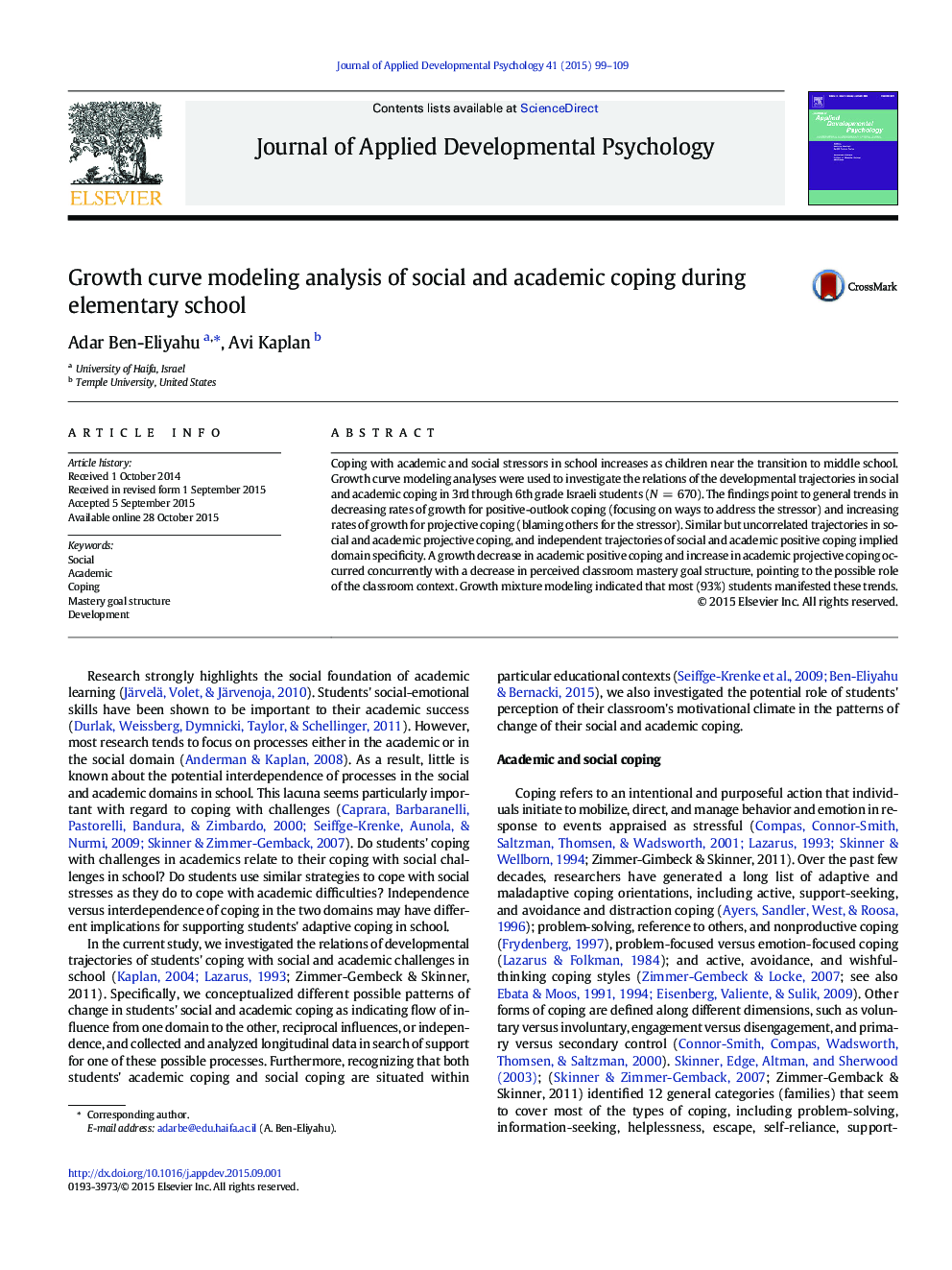| کد مقاله | کد نشریه | سال انتشار | مقاله انگلیسی | نسخه تمام متن |
|---|---|---|---|---|
| 359610 | 620258 | 2015 | 11 صفحه PDF | دانلود رایگان |
• Growth curve modeling examined 3rd–6th grade students' social and academic coping.
• Positive-outlook coping (focusing on ways to address the stressor) decreased.
• There was an increase in projective coping (blaming others for the stressor).
• Perceived mastery goal structure decreased, suggesting a role of classroom context.
• Growth mixture modeling indicated that most students manifested these trends.
Coping with academic and social stressors in school increases as children near the transition to middle school. Growth curve modeling analyses were used to investigate the relations of the developmental trajectories in social and academic coping in 3rd through 6th grade Israeli students (N = 670). The findings point to general trends in decreasing rates of growth for positive-outlook coping (focusing on ways to address the stressor) and increasing rates of growth for projective coping (blaming others for the stressor). Similar but uncorrelated trajectories in social and academic projective coping, and independent trajectories of social and academic positive coping implied domain specificity. A growth decrease in academic positive coping and increase in academic projective coping occurred concurrently with a decrease in perceived classroom mastery goal structure, pointing to the possible role of the classroom context. Growth mixture modeling indicated that most (93%) students manifested these trends.
Journal: Journal of Applied Developmental Psychology - Volume 41, November–December 2015, Pages 99–109
